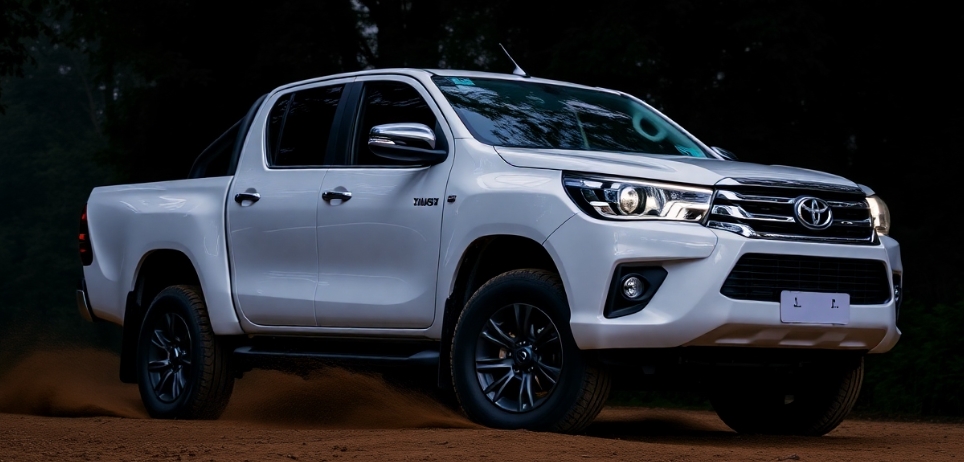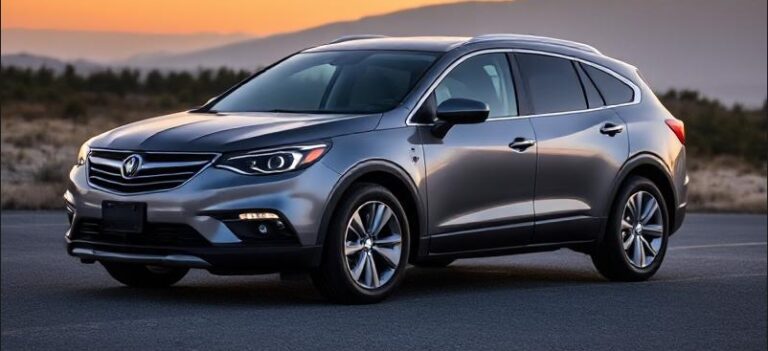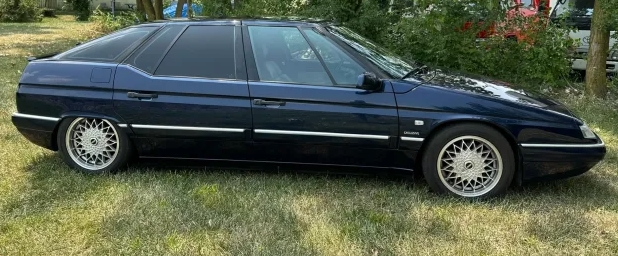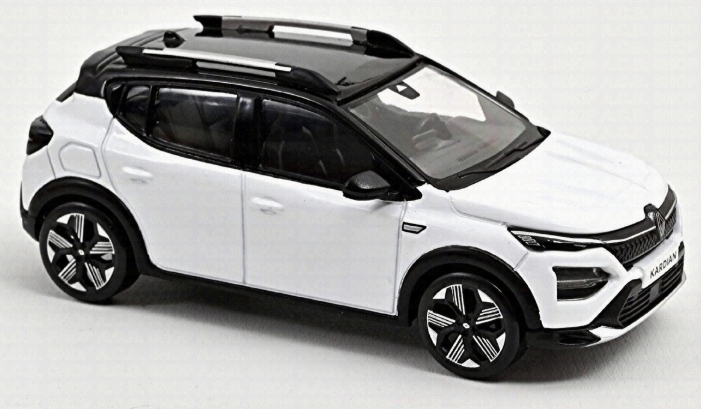The Unstoppable Legend: A Look at the Evolution of the Toyota Hilux
The Toyota Hilux, a name synonymous with rugged reliability, unwavering durability, and a go-anywhere attitude, has etched itself into the global automotive landscape. From its humble beginnings in 1968 as a compact pickup truck to its current status as a global icon, the Hilux has undergone a remarkable evolution, adapting to changing consumer needs, technological advancements, and diverse market demands. This article delves into the history of this legendary vehicle, examining its different generations, models, and trim levels that have shaped its enduring success.
First Generation (N10; 1968-1972): Pioneering the Pickup Frontier
The story of the Hilux began in March 1968, born from Toyota’s desire to enter the burgeoning compact pickup market. The first-generation Hilux, internally designated the N10, was a robust, yet relatively simple machine, designed for practicality and affordability. It was initially available in a single cab configuration, with a focus on work-oriented applications.
- Years Produced: 1968-1972
- Key Features:
- Rear-wheel drive (RWD) configuration.
- Powered by a 1.5-liter (later a 1.6-liter) petrol engine, known for its reliability.
- Four-speed manual transmission.
- Leaf spring suspension at the rear.
- Basic, functional interior.
- Trim Levels: The first generation Hilux was initially offered in a single, relatively basic trim level, focusing on functionality over features. Variations in engine size and minor trim details were available depending on the market.
Second Generation (N20; 1972-1978): Expanding Capabilities and Comfort
Building upon the success of its predecessor, the second-generation Hilux (N20) arrived in May 1972. This generation saw significant improvements in both mechanical capabilities and driver comfort. The styling was also updated, giving the Hilux a more modern and streamlined appearance.
- Years Produced: 1972-1978
- Key Features:
- Revised styling with a more contemporary aesthetic.
- Extended cab options were introduced in some markets.
- Engine options expanded, including petrol engines ranging from 1.6L to 2.2L.
- The introduction of a more comfortable and refined interior.
- Four-speed or five-speed manual transmissions.
- Four-wheel drive (4WD) became available later in the generation, significantly expanding the Hilux’s off-road capability.
- Trim Levels: Trim levels began to diversify. While the base models remained focused on utilitarian applications, higher trim levels offered features like upgraded upholstery, improved instrumentation, and optional air conditioning. Specific trim designations varied by market, but often included distinctions based on engine size and equipment.
Third Generation (N30/N40; 1978-1983): Cementing the Hilux’s Reputation
The third-generation Hilux (N30/N40), launched in August 1978, built upon the strengths of its predecessors. This generation saw further refinement in terms of engine options, styling, and off-road capabilities. It played a significant role in solidifying the Hilux’s reputation for durability and reliability, particularly in challenging environments.
- Years Produced: 1978-1983
- Key Features:
- Updated styling with a more squared-off, truck-like appearance.
- Extended cab and four-door (crew cab) options became more widely available.
- A wider range of engine choices, including both petrol and diesel engines.
- Continued improvements to the suspension and chassis.
- Increased payload capacity.
- Available with four-speed or five-speed manual transmissions.
- 4WD became a more integral part of the Hilux lineup, with improved off-road capabilities.
- Trim Levels: The trim levels continued to evolve, catering to a broader range of customers. Options included:
- Base Models: Focused on work-oriented applications with basic features.
- Deluxe: Offered improved interior trim and optional upgrades.
- SR5 (Sport Rally 5-speed): Represented a sportier trim with enhanced styling, improved instrumentation, and sometimes, a more powerful engine option.
- Specific trim packages and names varied by market.
.

.
Fourth Generation (N50/N60/N70; 1983-1988): Entering the Modern Era
The fourth-generation Hilux (N50/N60/N70), introduced in November 1983, marked a significant step forward for the model. This generation witnessed a more modern design aesthetic, incorporating a larger cabin and improved ride comfort. It also introduced advancements in engine technology and safety features.
- Years Produced: 1983-1988
- Key Features:
- More aerodynamic styling and a larger, more comfortable cabin.
- Expanded engine options, including both petrol and diesel engines.
- Introduction of electronic fuel injection (EFI) in some petrol engines.
- Improved suspension for a more comfortable ride.
- The introduction of features like power steering and air conditioning as optional equipment.
- Available with four-speed or five-speed manual transmissions, or a four-speed automatic transmission in some markets.
- Further enhancements to the 4WD system.
- Trim Levels: The trim level offerings became more diverse:
- Base Models: Continued to offer a work-focused configuration.
- Deluxe: Offered improved interior trim, comfort features, and optional upgrades.
- SR5: Featured enhanced styling elements, improved instrumentation, and could include more powerful engine options and features.
- 4Runner (N60/N120/N130): Introduced in some markets as an SUV variant of the Hilux, it offered a covered cargo area and a focus on passenger comfort, expanding the Hilux’s appeal beyond its traditional pickup role.
- Specific trim packages and names varied by market.
Fifth Generation (N80/N90/N100/N110; 1988-1997): Expanding into New Markets
The fifth-generation Hilux (N80/N90/N100/N110), launched in September 1988, continued to build on the Hilux’s success. This generation saw further refinement in design, engineering, and manufacturing processes. The Hilux became an even more global phenomenon, successfully entering new markets and solidifying its position as a versatile and reliable vehicle.
- Years Produced: 1988-1997
- Key Features:
- Updated styling with a more rounded appearance.
- Improved aerodynamics and fuel efficiency.
- Expanded engine options, including both petrol and diesel engines.
- Introduction of a new diesel engine that would become a Hilux mainstay for many years to come.
- Improvements in suspension, ride quality, and handling.
- Increased safety features, including optional anti-lock brakes (ABS).
- Available with five-speed manual or four-speed automatic transmissions.
- Continued advancements in the 4WD system.
- Trim Levels: The trim levels continued to evolve, offering a broader range of options to customers:
- Base Models: Offered a utilitarian configuration for work applications.
- Deluxe: Provided a step up in interior trim, comfort features, and options.
- SR5: Featured enhanced styling, improved instrumentation, and could include more powerful engine options and features.
- 4Runner: Continued to be available in some markets as an SUV derivative of the Hilux.
- Extra Cab/Double Cab: Cab configurations offered more passenger space.
- Specific trim packages and names varied by market.
Sixth Generation (N140/N150/N160/N170; 1997-2005): Refining a Global Icon
The sixth-generation Hilux (N140/N150/N160/N170), launched in September 1997, continued to refine the vehicle’s design, engineering, and manufacturing processes. This generation focused on improving passenger comfort, incorporating advanced safety features, and catering to a wider range of consumer needs.
- Years Produced: 1997-2005
- Key Features:
- Modernized styling with a more contemporary appearance.
- Improved aerodynamics and fuel efficiency.
- A focus on increasing passenger comfort and interior space.
- Expanded engine options, including both petrol and diesel engines.
- Introduction of a new generation of diesel engines with improved performance and fuel efficiency.
- Improvements in ride quality, handling, and noise insulation.
- Increased safety features, including dual front airbags and optional ABS.
- Available with five-speed manual or four-speed automatic transmissions.
- Further improvements to the 4WD system.
- Trim Levels: Trim level offerings reflected market demands and included:
- Base Models: Maintained a work-oriented configuration.
- DLX (Deluxe): Provided a step up in interior trim, comfort features, and options.
- SR5: Featured enhanced styling, improved instrumentation, and could include more powerful engine options and features.
- Limited: Offered a high-end trim level with premium features and styling.
- Extra Cab/Double Cab: Cab configurations continued to offer more passenger space.
- Specific trim packages and names varied by market.
Seventh Generation (AN10/AN20/AN30; 2005-2015): Redefining the Standard
The seventh-generation Hilux (AN10/AN20/AN30), introduced in August 2004, was a significant departure from its predecessors. It was a completely redesigned model, featuring a more modern design, improved performance, and enhanced safety features. This generation set a new standard for pickup truck design and functionality.
- Years Produced: 2005-2015
- Key Features:
- Radically redesigned with a more modern and imposing appearance.
- Improved aerodynamics and fuel efficiency.
- Significant improvements in ride comfort and handling.
- Expanded engine options, including both petrol and diesel engines.
- Introduction of new diesel engines with improved power, torque, and fuel efficiency.
- Increased safety features, including front airbags, side airbags, and optional stability control.
- Available with five-speed or six-speed manual transmissions, or four-speed or five-speed automatic transmissions.
- Advanced 4WD systems with electronic controls.
- Increased payload capacity.
- Trim Levels: Trim level designations reflected the evolution of the Hilux, with more emphasis on comfort and technology:
- Workmate: Entry-level work-oriented trim.
- DLX (Deluxe): Offered improved interior trim and features.
- SR: Featured enhanced styling and features.
- SR5: Included premium features, styling upgrades, and more powerful engine options.
- Invincible: A high-end trim level with a focus on luxury and performance in some markets.
- Extra Cab/Double Cab: Cab configurations continued to be available.
- Specific trim packages and names varied by market.
Eighth Generation (Revo; 2015-Present): The Modern Hilux
The eighth-generation Hilux, also known as the “Revo” in some markets, was introduced in May 2015. This generation represents the latest evolution of the Hilux, incorporating cutting-edge technology, advanced safety features, and a refined driving experience.
- Years Produced: 2015-Present
- Key Features:
- Completely redesigned with a more contemporary and robust appearance.
- Improved aerodynamics and fuel efficiency.
- Significant improvements in ride comfort, handling, and noise insulation.
- Expanded engine options, including both petrol and diesel engines.
- Introduction of more fuel-efficient diesel engines with enhanced performance and reduced emissions.
- Increased safety features, including advanced driver-assistance systems (ADAS) such as adaptive cruise control, lane departure warning, and automatic emergency braking.
- Available with six-speed manual or automatic transmissions.
- Advanced 4WD systems with electronic controls and selectable drive modes.
- Increased payload and towing capacity.
- Improved infotainment systems and connectivity features.
- Trim Levels: The current trim level options provide an extensive offering:
- Workmate: Entry-level work-focused model.
- SR: Offers improved features and styling.
- SR5: Focuses on a combination of features and style, often adding alloy wheels, upgraded infotainment, and additional driver aids.
- Rogue: Features a sporty appearance and often adds unique styling elements and suspension upgrades.
- GR Sport: Developed by Toyota Gazoo Racing, it offers enhanced performance and aggressive styling.
- Invincible: A top-of-the-line trim that blends luxury features with rugged capabilities.
- Double Cab/Extra Cab/Single Cab: Cab configurations are still available.
- Specific trim packages and names vary by market.
Conclusion: A Legacy of Reliability and Innovation
From its humble beginnings to its current status as a global icon, the Toyota Hilux has undergone a remarkable evolution. Through consistent innovation, unwavering commitment to reliability, and a willingness to adapt to changing consumer needs, the Hilux has cemented its place as a true automotive legend. Each generation has built upon the strengths of its predecessors, incorporating advancements in technology, engineering, and safety. Today, the Hilux continues to be a benchmark in the pickup truck segment, offering a combination of rugged capability, refined comfort, and cutting-edge technology, ensuring its continued success for years to come. The legacy of the Hilux is one of unwavering dependability, a testament to its enduring appeal and global popularity.







